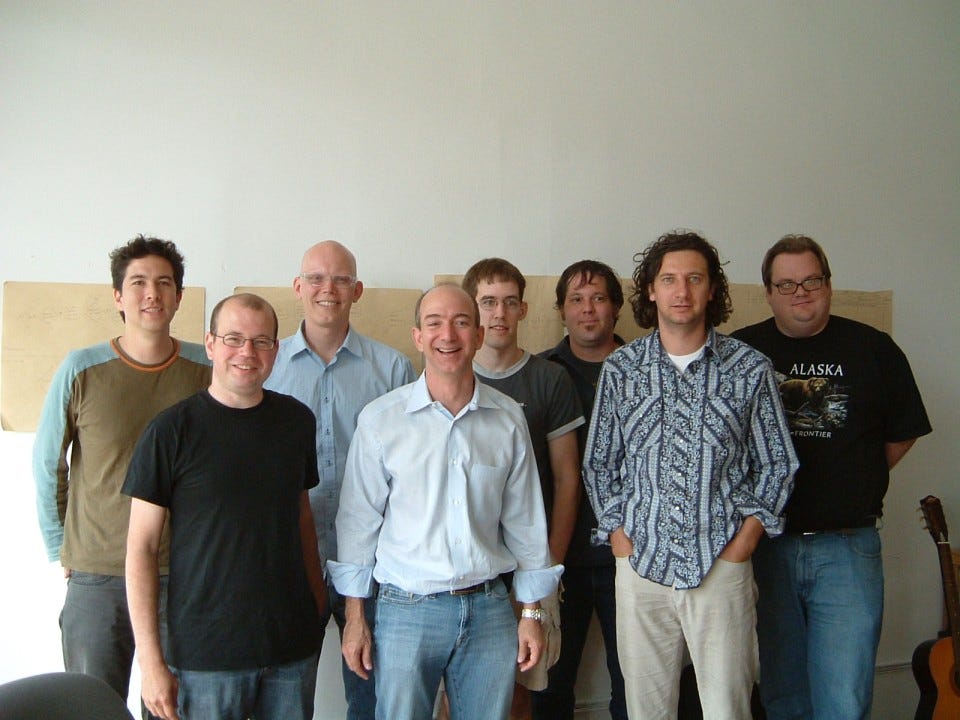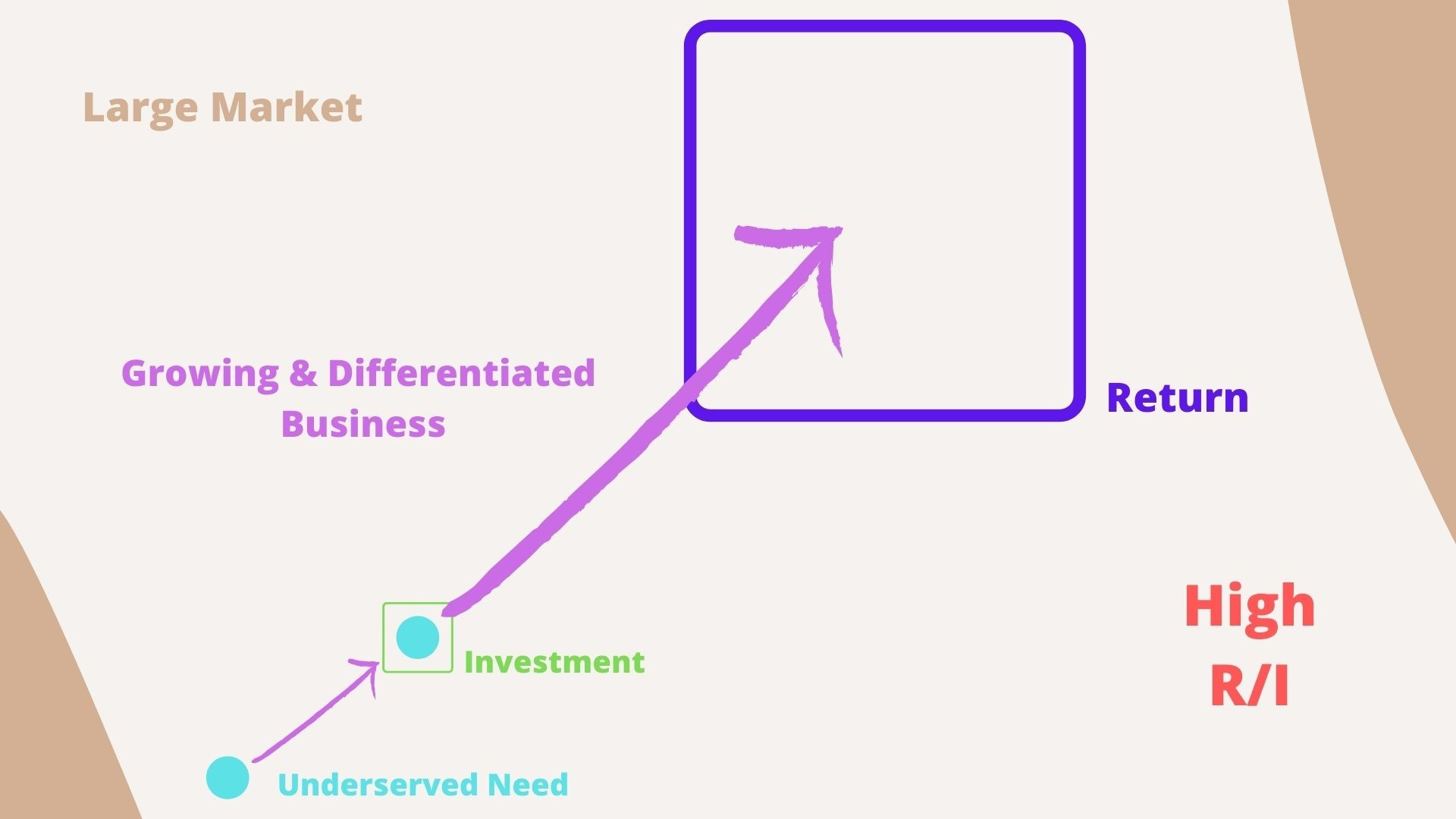The Philosophy of Jeff Bezos | Part 3
Originally Published on May 16, 2021

This is the third of six posts in the series that maps out Jeff's philosophy in his own words. In short, this particular post is the thematic compilation of the most interesting ideas from the shareholder letters written by Bezos from 2006 to 2010. To understand more about the series and my reasons behind writing it, read the preface from Part 1 of this series.
Interlude: Analysing all the text for patterns.
I ran an experiment where I compiled the text from all the Amazon letter into a text file and then ran a very basic text analysis on this file. Here are the results:
Most used word:
- Customer(s)
- Amazon
- New
- Year
- Percent
The word 'customer(s)' is used 2X more than the next most used word 'Amazon'. The following word cloud represents the same fact. The bigger the size of the word, the more it is used.

Most used two-word phrases:
- Long Term
- Customer Experience
- Cash Flow
- High Standards
Relative frequency of words used in the letters from 1997 - 2019:

The words 'new', 'percent' and 'year' appear consistently over the years. In the graph, you can clearly see them forming their own cluster at the bottom. If you consider them as noise, only two words consistently stand out - 'customers' and 'amazon'.
There are many inferences that can be drawn from these results and what they say about the company. I leave that task with you.
Now back to the compilation.
On Choosing New Businesses
Our established businesses are well-rooted young trees. They are growing, enjoy high returns on capital, and operate in very large market segments. These characteristics set a high bar for any new business we would start. Before we invest our shareholders’ money in a new business, we must convince ourselves that the new opportunity can generate the returns on capital our investors expected when they invested in Amazon. And we must convince ourselves that the new business can grow to a scale where it can be significant in the context of our overall company. Furthermore, we must believe that the opportunity is currently underserved and that we have the capabilities needed to bring strong customer-facing differentiation to the marketplace. Without that, it’s unlikely we’d get to scale in that new business...2006

As we continue to grow, we’ll work to maintain a culture that embraces new businesses. We won’t always choose right, and we won’t always succeed. But we will be choosy, and we will work hard and patiently...2006
Amazon’s culture is unusually supportive of small businesses with big potential, and I believe that’s a source of competitive advantage...The culture demands that these new businesses be high potential and that they be innovative and differentiated, but it does not demand that they be large on the day that they are born...2006
On Innovation
We knew Kindle would have to get out of the way, just like a physical book, so readers could become engrossed in the words and forget they’re reading on a device. We also knew we shouldn’t try to copy every last feature of a book—we could never out-book the book. We’d have to add new capabilities—ones that could never be possible with a traditional book...2007
Anytime you make something simpler and lower friction, you get more of it...2007
We humans coevolve with our tools. We change our tools, and then our tools change us. Writing, invented thousands of years ago, is a grand whopper of a tool, and I have no doubt that it changed us dramatically. Five hundred years ago, Gutenberg’s invention led to a significant step-change in the cost of books. Physical books ushered in a new way of collaborating and learning. Lately, networked tools such as desktop computers, laptops, cell phones and PDAs have changed us too...2007
(Before Kindle) Amazon had never designed or built a hardware device, but rather than change the vision to accommodate our then-existing skills, we hired a number of talented (and missionary!) hardware engineers and got started learning a new institutional skill, one that we needed to better serve readers in the future...2008
...while many of our systems are based on the latest in computer science research, this often hasn’t been sufficient: our architects and engineers have had to advance research in directions that no academic had yet taken. Many of the problems we face have no textbook solutions, and so we—happily—invent new approaches...2010
All the effort we put into technology might not matter that much if we kept technology off to the side in some sort of R&D department, but we don’t take that approach. Technology infuses all of our teams, all of our processes, our decision making, and our approach to innovation in each of our businesses. It is deeply integrated into everything we do...2010
I realize my tone here tends toward the missionary, and I can assure you it’s heartfelt. It’s also not unique to me but is shared by a large group of folks here. I’m glad about that because missionaries build better products...2007
On Amazon's Strategy
In this turbulent global economy, our fundamental approach remains the same. Stay heads down, focused on the long term and obsessed over customers. Long-term thinking levers our existing abilities and lets us do new things we couldn’t otherwise contemplate. It supports the failure and iteration required for invention, and it frees us to pioneer in unexplored spaces. Seek instant gratification—or the elusive promise of it—and chances are you’ll find a crowd there ahead of you. Long-term orientation interacts well with customer obsession. If we can identify a customer need and if we can further develop conviction that that need is meaningful and durable, our approach permits us to work patiently for multiple years to deliver a solution. “Working backward” from customer needs can be contrasted with a “skills-forward” approach where existing skills and competencies are used to drive business opportunities. The skills-forward approach says, “We are really good at X. What else can we do with X?” That’s a useful and rewarding business approach. However, if used exclusively, the company employing it will never be driven to develop fresh skills. Eventually the existing skills will become outmoded. Working backward from customer needs often demands that we acquire new competencies and exercise new muscles, never mind how uncomfortable and awkward-feeling those first steps might be...2008
Editor's Note: The following is Amazon's customer experience strategy. Amazon's pricing, product selection, and delivery strategies all start from here. The variables are optimised accordingly: Price-->Low, Selection --> Vast, Delivery --> Fast & Convenient.
- In our retail business, we have strong conviction that customers value low prices, vast selection, and fast, convenient delivery and that these needs will remain stable over time. Our belief in the durability of these pillars is what gives us the confidence required to invest in strengthening them...2008
Editor's Note: The following is Amazon's financial strategy.
Our primary financial goal remains maximising long-term free cash flow and doing so with high rates of return on invested capital...2008
On Pricing Products
- Our pricing objective is to earn customer trust, not to optimise short-term profit dollars...We may make less per item, but by consistently earning trust we will sell many more items. Therefore, we offer low prices across our entire product range...2008
On Amazon's Goal Setting Strategy & Process
- Senior leaders that are new to Amazon are often surprised by how little time we spend discussing actual financial results or debating projected financial outputs. To be clear, we take these financial outputs seriously, but we believe that focusing our energy on the controllable inputs to our business is the most effective way to maximize financial outputs over time...2009
- Our annual goal setting process begins in the fall and concludes early in the new year after we’ve completed our peak holiday quarter. Our goal setting sessions are lengthy, spirited, and detail oriented. We have a high bar for the experience our customers deserve and a sense of urgency to improve that experience. We’ve been using this same annual process for many years...2009
- For 2010, we have 452 detailed goals with owners, deliverables, and targeted completion dates... None of these goals are easy and many will not be achieved without invention. We review the status of each of these goals several times per year among our senior leadership team and add, remove, and modify goals as we proceed...Taken as a whole, the set of goals is indicative of our fundamental approach. Start with customers and work backward. Listen to customers, but don’t just listen to customers—also invent on their behalf. We can’t assure you that we’ll meet all of this year’s goals. We haven’t in past years. However, we can assure you that we’ll continue to obsess over customers....2009